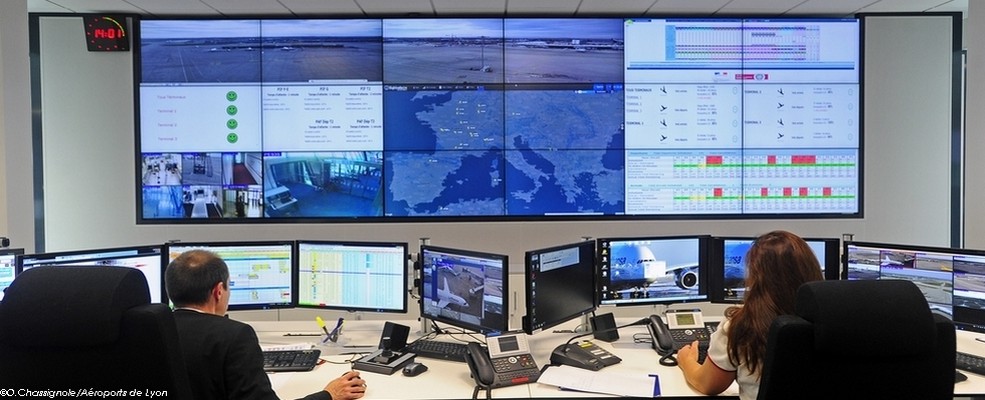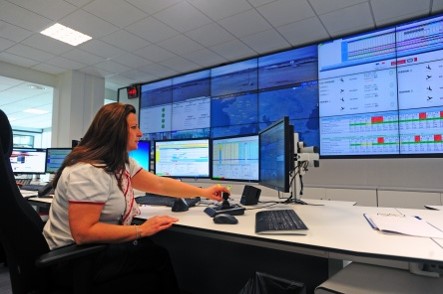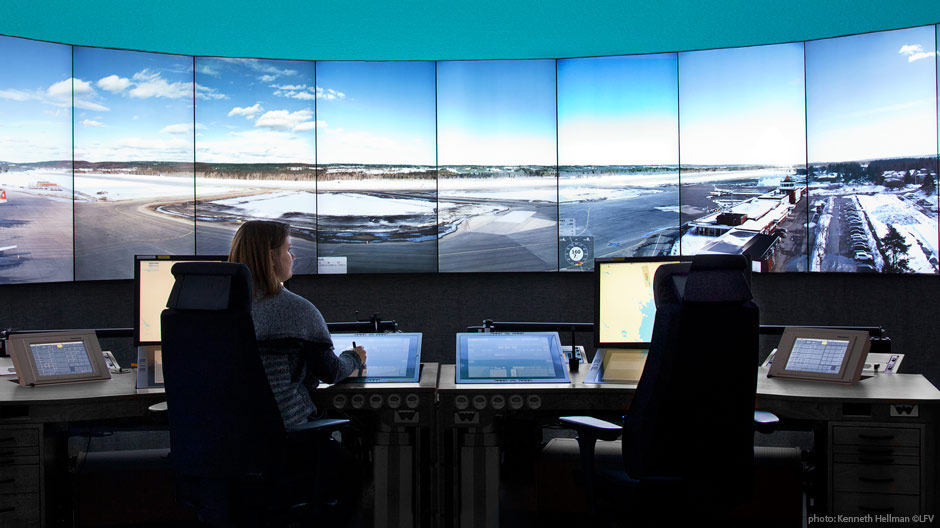
How can innovation help airports in a post-COVID world? That is the question that members and partners in the SESAR Joint Undertaking (SESAR JU) are investigating. They are looking at solutions in the SESAR research and innovation pipeline that could help airports adapt their operations to the new normal, as well as technologies that could build resilience especially among hard-hit small to medium airports.
From medical screening and checks to physical distancing requirements, airports are already putting in place a whole host of measures to ensure the health and safety of passengers and staff in what is expected to become the new norm in air travel for the foreseeable future. These requirements will have a massive impact on passenger flow, terminal capacity, transfer times and the overall duration of a journey. They will therefore demand even greater collaboration between the different airport stakeholders, from the airlines, ground handlers and air traffic control to security, emergency services and airport management.
Rather than reinventing the wheel, there are already solutions out there that can help with this adaptation and ensure that these new requirements are integrated into the overall management of airport operations. As part of its Total Airport Management project, the SESAR JU has developed a series of tools to better integrate airside and landside performance monitoring processes, which can be adapted to any airport setting.
Some airports have already set up operations centres or APOCs to manage these processes collaboratively. In them, stakeholders are offered a shared view of flight prioritisation, runway traffic loads and turn-around times of aircraft, as well as baggage and passenger operations and more generally the status of the overall airport operations. Through real-time monitoring and with the help of automation and decision support tools, the airport can anticipate disruptions allowing airports’ stakeholders to take corrective actions, enabling better synchronisation between these operations and improved predictability.
With our airport partners, we are looking at how APOCs and their performance monitoring and management could be extended to sanitary and physical distancing measures in order to manage their impact on passenger, security, stand allocation and turnaround processes, as well as the predicted time that all the ground-handling activities will be completed. It would also lead to the development of indicators and alerts within the airport operations plan and APOCs to deal with the status of sanitary checks, providing airports with predictability and the required agility to regularly adapt their measures and processes to changing constraints (e.g. a second wave of outbreaks). Some possible adaptations could also include the installation of cameras on the ground, as well as the use of video analytics and artificial intelligence to handle all the data generated by the checks.
|
Airport operations centres (APOC) Already in place in various configurations at London Heathrow, Brussels, Paris CDG, Geneva and Lyon airports, APOCs are helping airports stakeholders to respond quickly and efficiently to any unexpected changes and avoid potential disruptions. |
With COVID, there is clearly an increasing need for airports to monitor and manage the impact of landside activities on airside operations. That is especially true for smaller airports, whose landside or terminal capacity will be significantly impacted as a result of the sanitary and physical distancing measures that will be put in place. In this context, SESAR members are looking at how the services delivered by the APOC can be made more affordable for regional airports in Europe, by moving from cost-intensive databases to services delivered through the cloud. Another cost saving could be made through the simplification of collaborative decision making for these airports, focusing only on essential milestones. Big data and artificial intelligence could also help, for example by allowing the automation of target-off block and target start-up time calculations.

|
AI in aviation Building on a symposium organised in 2019 by Eurocontrol on artificial intelligence, European partners published a report “FLY AI”, outlining the potential of AI for ATM, including airports. The report also presents examples of SESAR projects making use of AI. |
Smaller airports are particularly vulnerable now and will need to build their resilience at an affordable price in the long term. Given the social and economic importance of these smaller airports for their surrounding communities, it will be critical to have strategies to ensure their sustainability. Innovation has a role to play, which we are demonstrating with our research portfolio of solutions, many of which are already available for implementation, providing airports with the means to improve accessibility and increase their resilience at a fraction of the cost.
Take satellite-based navigation technologies such as the GBAS Category II/III solution, which enables enhanced arrival procedures at much lower maintenance costs compared to traditional navigation means. Meanwhile, enhanced terminal operations with required navigation performance (RNP) transitions are particularly relevant for airports with geographical constraints to ensure accessibility.
We are also developing low-cost advanced surface surveillance solutions based on cameras and ADS-B, as well as surface safety nets for airports that do not have an A-SMGCS installation. Added to that are the advances that we have made on enhanced vision systems for aircraft, which require minimum changes to the existing air traffic control procedures and no investment in new ground systems. Remote tower service provision is also a proven means to increase cost efficiency of smaller aerodromes that are often connecting the most remote parts of Europe, providing them with an economic lifeline.
Understandably, the focus of airports is on the here and now; as States look at lifting travel restrictions so that air connectivity can be gradually restored, airports are putting in place measures to ensure the safest and healthiest passenger experience possible. Technology and innovation will be key in this process since it will help airports adapt to the new travel etiquette, building confidence among the travelling public, while preserving capacity and maintaining efficient operations.
|
Seeing is believing
|

